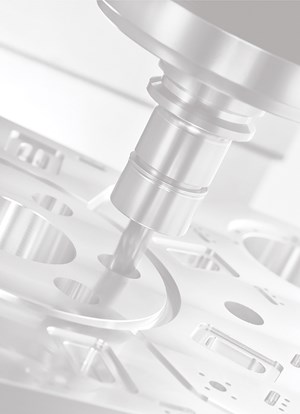Controller Promotes Increased Safety, Efficiency
Yaskawa Motoman’s Robotics division offers the DX200 robot controller, which is based on the process capabilities of the previous DX100 controller.
Share



Yaskawa Motoman’s Robotics division offers the DX200 robot controller, which is based on the process capabilities of the previous DX100 controller. The system can control as many as eight robots or 72 axes with coordinated motion between devices. It is equipped with an ergonomic teach pendant, built-in PLC cell control capability, and optimized path and process control.
The energy-saving DX200 is said to provide faster processing speeds, enhanced control-reliable safety and improved maintainability. Depending on the application and robot size, the controller can conserve power by as much as 70 percent over previous generations, the company says. A static load reduction function reduces motor torque when the robot maintains a static position, and the controller also conserves power during robot idle time by idling motors and fans. Yaskawa’s Sigma-5 motor technology is said to optimize acceleration characteristics and reduce cycle time.
An enhanced functional safety unit (FSU) provides control-reliable zone and tool-position monitoring, standstill monitoring, and speed limiting, reducing the costs of safeguarding hardware while enabling collaborative tasks. The FSU can define multiple zones and monitor whether the robot is inside or outside the zone. A graphic utility on the teach pendant aids the setup of the robot, tool and work zones. User-defined zones are displayed on the visual read out, colored by work zone and type.
The I/O suite includes integral PLC and HMI pendant displays, built-in ladder logic processing, 4,096 I/O and a graphical ladder editor that can provide an efficient system level control. The controller is said to support all major fieldbus networks and offers a simple connection to information infrastructure through standard network options for Ethernet/IP, DeviceNet, Profibus-DP and more.
Related Content
-
2 Secondary Coordinate Systems You Should Know
Coordinate systems tell a CNC machine where to position the cutting tool during the program’s execution for any purpose that requires the cutting tool to move.
-
Can AI Replace Programmers? Writers Face a Similar Question
The answer is the same in both cases. Artificial intelligence performs sophisticated tasks, but falls short of delivering on the fullness of what the work entails.
-
ANCA Celebrates 50th Anniversary
ANCA CNC Machines is celebrating its 50th anniversary as a global producer of CNC tool and cutter grinders.












.png;maxWidth=300;quality=90)





